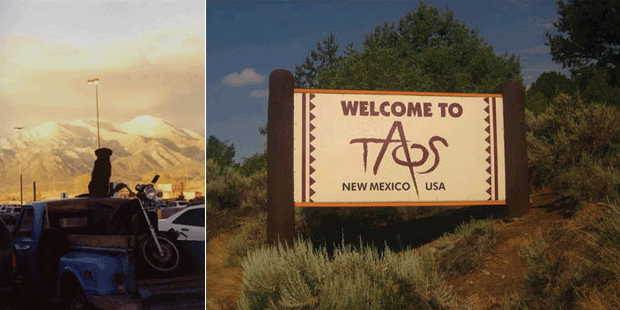|
The world is full of mysteries, many old and
mysterious things still make us wonder about human creations and the
power of nature. Some of them have been solved with modern technology
and research, but there are many manmade and natural things which are
still unexplainable and wear that mystery cap. Here are the few such
mysteries which gives a kick to human brain and modern technology.
|
|
Oera Linda Book
The Oera Linda Book is a controversial Frisian manuscript covering
historical, mythological, and religious themes that first came to light
in the 19th century. Themes running through the Oera Linda Book include
catastrophism, nationalism, matriarchy, and mythology. The text alleges
that Europe and other lands were, for most of their history, ruled by a
succession of folk-mothers presiding over a hierarchical order of
celibate priestesses dedicated to the goddess Frya, daughter of the
supreme god Wr-alda and Irtha, the earth mother. The claim is also made
that this Frisian civilization possessed an alphabet which was the
ancestor of Greek and Phoenician alphabets. The current manuscript
carries a date of 1256. Internal claims suggest that it is a copy of
older manuscripts that, if genuine, would have been written by multiple
people between 2194 BC and AD 803.
|
|
 |
|
The Lost Island of Atlantis
One of the oldest mysteries in the world, the legend of Atlantis has
mystified humanity since ancient times. According to the Greek
philosopher Plato, Atlantis was a large island somewhere west of the
Pillars of Hercules (the Rock of Gibraltar) and the home of an
incredibly advanced civilization known as the Atlanteans. Plato
described Atlantis as a place of immense beauty with a palace compound
in the center of three ringed canals. He said that every king that
inherited the palace would add to it, trying to surpass his predecessor
and by doing so they made it a palace that surpassed any other in both
beauty and wealth. The Atlanteans themselves were blessed with wealth
but at the same they were incredibly ambitious, constantly seeking
power. Atlantis is said to have met its end when it was hit by a giant
earthquake and swallowed by the sea. But is any of this the truth or is
the story of Atlantis just a myth?
|
|

|
|
Shroud of Turin
The shroud of Turin is a linen cloth bearing the image of a man who had
apparently died of crucifixion. Most Catholics consider it to be the
burial shroud of Jesus Christ. It is currently held in the Cathedral of
St John the Baptist in Turin, Italy. Despite many scientific
investigations, no one has yet been able to explain how the image has
been imprinted on the shroud and despite many attempts, no one has
managed to replicate it. Radiocarbon tests date it to the middle ages,
however apologists for the shroud believe it is incorrupt – and carbon
dating can only date things which decay.
Prior to the middle ages, reports of the shroud exist as the Image of
Edessa – reliably reported since at least the 4th century. In addition,
another cloth (the Sudarium) known even from biblical times (John 20:7)
exists which is said to have covered Christ’s head in the tomb. A 1999
study by Mark Guscin, a member of the multidisciplinary investigation
team of the Spanish Center for Sindonology, investigated the
relationship between the two cloths. Based on history, forensic
pathology, blood chemistry (the Sudarium also is reported to have type
AB blood stains), and stain patterns, he concluded that the two cloths
covered the same head at two distinct, but close moments of time.
Avinoam Danin (a researcher at the Hebrew University of Jerusalem)
concurred with this analysis, adding that the pollen grains in the
Sudarium match those of the shroud.
|
|

|
|
The taos hum
The ‘Taos Hum’ is a low-pitched sound heard in numerous places
worldwide, especially in the USA, UK, and northern europe. It is usually
heard only in quiet environments, and is often described as sounding
like a distant diesel engine. Since it has proven indetectable by
microphones or VLF antennae, its source and nature is still a mystery.
In 1997 Congress directed scientists and observers from some of the most
prestigious research institutes in the nation to look into a strange low
frequency noise heard by residents in and around the small town of Taos,
New Mexico. For years those who had heard the noise, often described by
them as a “hum”, had been looking for answers. To this day no one knows
the cause of the hum.
|
|
 |